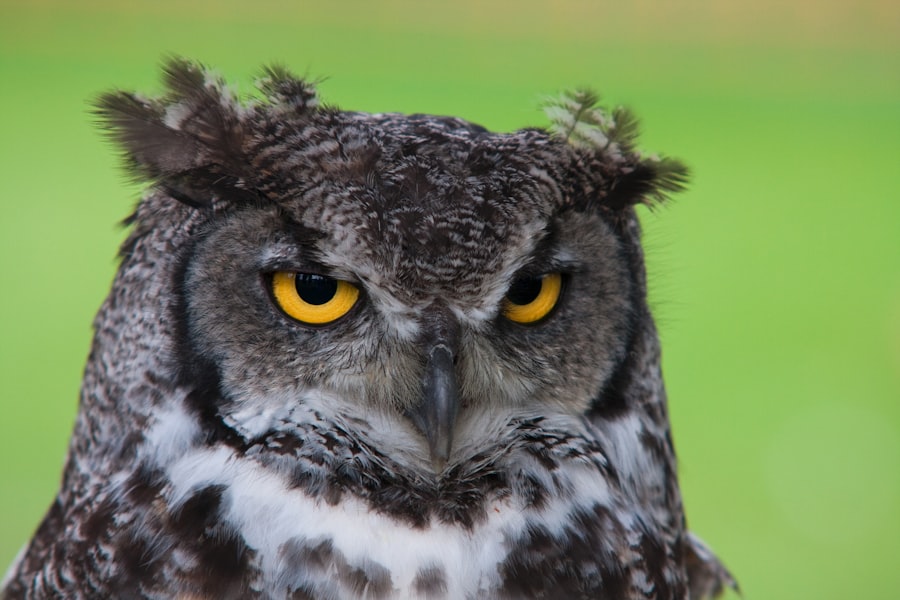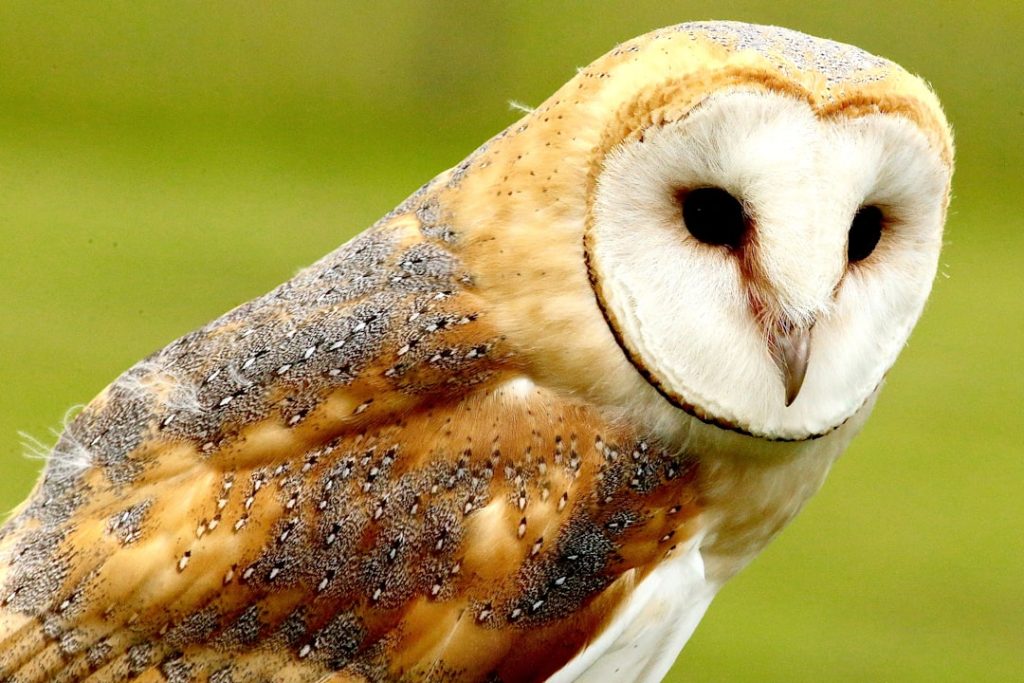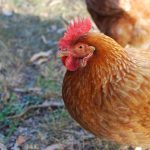Owls are natural predators and pose a significant threat to chickens. These birds of prey have keen eyesight and sharp talons, making them efficient hunters. They are known to hunt at night, which is when chickens are most vulnerable.
Owls are silent flyers, allowing them to swoop down on unsuspecting chickens without warning. Additionally, owls have a varied diet and will not hesitate to target chickens as a source of food. Owls are also known for their ability to adapt to different environments, making them a common threat to backyard chicken owners.
They are found in various habitats, from forests and grasslands to urban areas, increasing the likelihood of encounters with chickens. It is essential for chicken owners to understand the predatory nature of owls and take proactive measures to protect their flock. Owls are skilled hunters that pose a significant danger to chickens.
Their nocturnal hunting habits, silent flight, and adaptability to different environments make them a constant threat to backyard chicken owners. Understanding the predatory nature of owls is crucial in implementing effective measures to protect chickens from these formidable hunters.
Table of Contents
- 1 Implementing physical barriers: How to protect your chickens with fencing and netting
- 2 Utilizing scare tactics: Using visual and auditory deterrents to keep owls at bay
- 3 Creating a safe environment: Providing secure roosting areas for chickens at night
- 4 Establishing a routine: Consistent feeding and locking up of chickens to avoid owl encounters
- 5 Seeking professional help: Consulting with wildlife experts for long-term solutions
- 6 Educating yourself: Understanding owl behavior and habits to better protect your chickens
- 7 FAQs
- 7.1 What are some natural ways to keep owls away from my chickens?
- 7.2 Are there any commercial products available to keep owls away from chickens?
- 7.3 What are some measures I can take to secure my chicken coop from owl attacks?
- 7.4 Are there any legal considerations when it comes to deterring owls from my property?
Key Takeaways
- Owls pose a danger to chickens due to their predatory nature and ability to silently attack at night.
- Protect your chickens with fencing and netting to create physical barriers that prevent owl attacks.
- Use visual and auditory deterrents such as scarecrows and noise-making devices to keep owls away from your chickens.
- Provide secure roosting areas for chickens at night to minimize the risk of owl attacks.
- Establish a routine of consistent feeding and locking up of chickens to avoid owl encounters, especially at dusk and dawn.
- Consult with wildlife experts for long-term solutions to protect your chickens from owl attacks.
- Educate yourself about owl behavior and habits to better understand how to protect your chickens from potential threats.
Implementing physical barriers: How to protect your chickens with fencing and netting
Creating a Secure Perimeter
One of the most effective ways to protect chickens from owl attacks is by implementing physical barriers such as fencing and netting. Fencing can be used to create a secure perimeter around the chicken coop, preventing owls from gaining access to the birds. It is essential to use sturdy materials such as hardware cloth or welded wire to ensure that the fencing is predator-proof.
Additional Layers of Protection
Burying the fencing underground can prevent predators from digging underneath to gain access. Netting can also be used to cover the top of the chicken run or outdoor enclosure, providing an extra layer of protection against aerial attacks from owls. It is crucial to use heavy-duty netting that is securely fastened to prevent owls from tearing through or gaining entry.
Maintenance and Inspection
By implementing physical barriers such as fencing and netting, chicken owners can create a secure environment for their flock, minimizing the risk of owl attacks. In addition to fencing and netting, it is essential to regularly inspect and maintain these physical barriers to ensure their effectiveness. Any signs of wear or damage should be promptly repaired to prevent potential breaches by owls or other predators.
A Safe Environment for Your Flock
By implementing and maintaining physical barriers, chicken owners can significantly reduce the risk of owl attacks and provide a safe environment for their flock.
Utilizing scare tactics: Using visual and auditory deterrents to keep owls at bay

In addition to physical barriers, scare tactics can be used to deter owls from targeting chickens. Visual deterrents such as predator decoys, reflective tape, or shiny objects can be strategically placed around the chicken coop to create an intimidating environment for owls. Predator decoys, such as owl or hawk replicas, can create the illusion of a threat and discourage real owls from approaching the area.
Reflective tape or shiny objects can disorient owls with flashes of light, making them uncomfortable and less likely to linger around the chicken coop. Auditory deterrents, such as motion-activated alarms or radios playing loud noises, can also be effective in deterring owls. These devices can startle owls with unexpected sounds, disrupting their hunting behavior and encouraging them to seek quieter hunting grounds.
By utilizing visual and auditory deterrents, chicken owners can create an environment that is unappealing to owls, reducing the likelihood of attacks on their flock. It is important to regularly rotate and reposition visual deterrents to prevent owls from becoming accustomed to their presence. Additionally, auditory deterrents should be used sparingly to avoid habituation by owls.
By combining physical barriers with scare tactics, chicken owners can create a multi-layered approach to protect their flock from owl attacks.
Creating a safe environment: Providing secure roosting areas for chickens at night
Creating a safe environment for chickens involves providing secure roosting areas for them at night. Owls are most active during the night, making it crucial for chicken owners to ensure that their flock has a safe place to roost without being vulnerable to owl attacks. Roosts should be elevated off the ground and enclosed within the chicken coop or run, providing chickens with a secure space to rest without the risk of being targeted by owls.
It is essential to regularly inspect roosting areas for any signs of wear or damage that could compromise their security. Any weak spots or potential entry points for predators should be promptly addressed to maintain a safe environment for the flock. By providing secure roosting areas for chickens at night, chicken owners can minimize the risk of owl attacks and ensure the safety of their birds.
In addition to secure roosting areas, it is important to provide adequate lighting around the chicken coop or run to discourage nocturnal predators such as owls. Motion-activated lights or solar-powered lighting can help deter owls from approaching the area by creating an illuminated environment that is less appealing for hunting. By creating a safe environment with secure roosting areas and adequate lighting, chicken owners can effectively protect their flock from owl attacks.
Establishing a routine: Consistent feeding and locking up of chickens to avoid owl encounters
Establishing a routine for feeding and locking up chickens is essential in minimizing the risk of owl encounters. Owls are opportunistic hunters and will target chickens that are easily accessible during their hunting expeditions. By establishing a consistent feeding schedule for chickens during daylight hours, chicken owners can reduce the likelihood of their flock being active at night when owls are most active.
It is also important to ensure that chickens are securely locked up in their coop or run at nightfall to avoid potential encounters with owls. By consistently locking up the flock at dusk, chicken owners can prevent their birds from being vulnerable to owl attacks during the night. Additionally, regular checks should be conducted to ensure that all entry points are secured and that there are no potential weak spots that could compromise the safety of the flock.
By establishing a routine for feeding and locking up chickens, chicken owners can minimize the risk of owl encounters and provide a secure environment for their flock. Consistency is key in reducing the likelihood of owl attacks and ensuring the safety of chickens.
Seeking professional help: Consulting with wildlife experts for long-term solutions

Expert Insights and Recommendations
In some cases, it may be necessary to seek professional help from wildlife experts for long-term solutions in managing owl threats to chickens. Wildlife experts have the knowledge and experience in dealing with predator-prey dynamics and can provide valuable insights and recommendations for protecting chickens from owl attacks. They can assess the specific risks and vulnerabilities on a property and offer customized solutions tailored to the unique needs of the flock.
Habitat Management and Owl Deterrents
Wildlife experts can also provide guidance on habitat management practices that can deter owls from frequenting areas where chickens are kept. By modifying the landscape or implementing habitat enhancements, such as planting dense shrubbery or trees, chicken owners can create natural barriers that discourage owls from hunting in close proximity to their flock.
Humane and Ethical Owl Population Management
Additionally, wildlife experts can offer advice on non-lethal methods for managing owl populations in a humane and ethical manner.
Long-term Solutions for Chicken Protection
By seeking professional help, chicken owners can gain access to valuable resources and expertise that can contribute to long-term solutions in protecting their flock from owl attacks.
Educating yourself: Understanding owl behavior and habits to better protect your chickens
Educating yourself about owl behavior and habits is essential in better protecting your chickens from potential attacks. Understanding the hunting patterns, preferred prey, and territorial behaviors of owls can help chicken owners identify potential risks and implement effective measures to mitigate them. By learning about the specific species of owls in your area and their typical hunting grounds, you can make informed decisions in managing potential threats to your flock.
It is also important to familiarize yourself with local regulations and guidelines regarding wildlife management and conservation efforts. By staying informed about legal considerations related to managing owl threats, you can ensure that your efforts in protecting your flock are in compliance with applicable laws and regulations. Furthermore, educating yourself about owl behavior can help you recognize signs of potential owl activity around your property.
By being vigilant and observant, you can take proactive measures to address any potential risks before they escalate into actual threats to your flock. In conclusion, protecting chickens from owl attacks requires a multi-faceted approach that includes understanding the threat posed by owls, implementing physical barriers and scare tactics, creating a safe environment for chickens, establishing a routine for feeding and locking up the flock, seeking professional help when necessary, and educating yourself about owl behavior and habits. By taking proactive measures and staying informed about effective strategies for managing owl threats, chicken owners can provide a secure environment for their flock and minimize the risk of owl attacks.
If you’re looking for more tips on keeping your chickens safe, you might want to check out this article on where to put your chicken coop. It offers valuable advice on the best location for your coop to keep your chickens safe from predators like owls.
FAQs
What are some natural ways to keep owls away from my chickens?
Some natural ways to keep owls away from your chickens include using reflective surfaces, such as CDs or mirrors, to create a deterrent, installing motion-activated lights or sprinklers, and using scare tactics like loud noises or predator decoys.
Are there any commercial products available to keep owls away from chickens?
Yes, there are commercial products available, such as owl decoys, predator eyes balloons, and electronic deterrents, that are designed to keep owls away from chickens.
What are some measures I can take to secure my chicken coop from owl attacks?
To secure your chicken coop from owl attacks, you can use hardware cloth to cover windows and vents, install an enclosed run for your chickens, and make sure the coop is securely locked at night to prevent owl entry.
Are there any legal considerations when it comes to deterring owls from my property?
Yes, it is important to be aware of local and federal laws protecting owls, as some species are protected under the Migratory Bird Treaty Act. It is important to use non-lethal methods to deter owls and to ensure that any deterrent measures do not harm the owls in any way.
Meet Walter, the feathered-friend fanatic of Florida! Nestled in the sunshine state, Walter struts through life with his feathered companions, clucking his way to happiness. With a coop that’s fancier than a five-star hotel, he’s the Don Juan of the chicken world. When he’s not teaching his hens to do the cha-cha, you’ll find him in a heated debate with his prized rooster, Sir Clucks-a-Lot. Walter’s poultry passion is no yolk; he’s the sunny-side-up guy you never knew you needed in your flock of friends!








